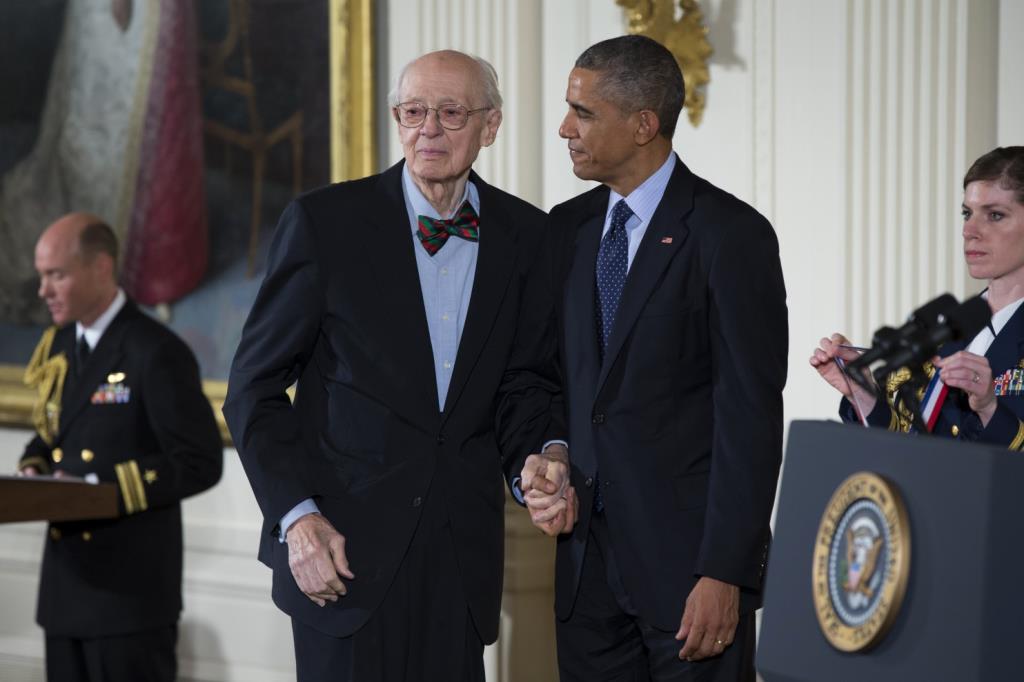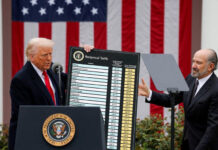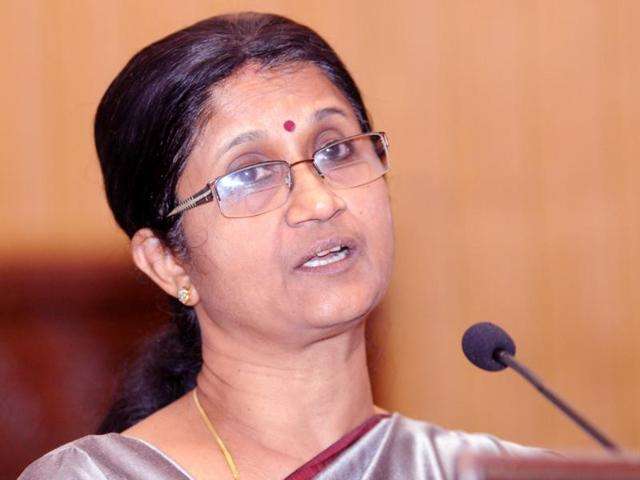July 17, 2017
Charles W. Bachman, a software engineer whose creation of the first database management system helped popularize computers in the corporate world and earned him the highest honor in computer science, died July 13 at his home in Lexington, Mass. He was 92.

July 17, 2017
Charles W. Bachman, a software engineer whose creation of the first database management system helped popularize computers in the corporate world and earned him the highest honor in computer science, died July 13 at his home in Lexington, Mass. He was 92.

Charles W. Bachman was awarded the National Medal of Technology and Innovation by President Barack Obama in 2012. The award is the highest honor bestowed by the U.S. government upon scientists, engineers and inventors. (Evan Vucci/AP)
The cause was Parkinson’s disease, said a daughter, Chandini Bachman.
When Mr. Bachman joined General Electric in 1960, computers were bulky, costly, arcane and in many cases disappointing. The devices had promised to reshape businesses around the world, making it possible to automate everything from accounting to inventory, but companies struggled to integrate different processes in one easy-to-use system.
Altering an inventory program, for instance, might require subsequent alterations in a related supply program or changes in a program showing customers’ recent orders. And because data was stored on magnetic tape, it had to be accessed sequentially — just as, when watching a movie on a VHS tape, there is no way to access the end of the film without fast-forwarding through the beginning and the middle.
The creation of disk storage, in place of tape, allowed computers to access and alter individual records much faster, through a process known as random access. It was what General Electric and Mr. Bachman likened to a system of “one million pigeon holes,” in which data could be retrieved from any “hole” at all — from a hole labeled C or a hole labeled X, without having to go from A to B to C, all through the alphabet.
Mr. Bachman with Sara Turing, mother of computer scientist Alan Turing, in 1974. Mr. Bachman visited Turing after being honored with the Turing Award in 1973. (Constance H. Bachman)
Mr. Bachman, a bow tie aficionado with a fondness for exotic plants, devised a kind of road map for the system that would allow programs to access a vast database and make changes within fractions of a second.
His road map, created with a GE team in the early 1960s, was known as the Integrated Data Store, or IDS. It is widely considered the world’s first database management system, an essential yet seldom-recognized part of modern computing.
“The database management system is really an absolutely essential piece of software technology. It’s maybe the most important kind of software,” said Thomas Haigh, an associate professor of computing history at the University of Wisconsin in Milwaukee. The software, he said, is used anytime you rent a car, buy a book or “pretty much do anything online.”
Developed further by companies such as Oracle, a database management system allows businesses to link any number of data sets — connecting a customer’s profile with their recent purchases or those of similar customers. Mr. Bachman, using diagrams that now bear his name, was able to map out the relationship between different sets of databases and with relative ease program the way that one set affects the other.
For his efforts, he was awarded the A.M. Turing Award in 1973, named for computer pioneer Alan Turing. Given by the Association for Computing Machinery, an international computing society, the award is often described as the Nobel Prize of computer science. It was the first time in the award’s eight-year history that the honor had been bestowed on someone without a doctorate or given to someone trained in engineering instead of science.
In his Turing Award lecture, Mr. Bachman described a revolutionary change occurring in the world of computers, “a shift from a computer-centered to [a] database-centered point of view,” comparable to astronomy’s Copernican shift from an Earth-centered to a sun-centered model.
He went on to ensure that the shift occurred, helping to codify the details of database management systems through the Database Task Group, part of the influential group Conference on Data Systems Languages, or CODASYL.
Charles William Bachman Jr. was born Dec. 11, 1924, in Manhattan, Kan., and grew up in East Lansing, Mich. His mother was a nutritionist. His father, Charley Bachman, was the football coach at what is now Kansas State University and Michigan State University, and was inducted into the College Football Hall of Fame in 1978.
Mr. Bachman traced his enthusiasm for mechanical engineering back to childhood, when he built and raced a Soap Box Derby car and advanced to the national competition in Akron, Ohio. Through his mother, he also developed a passion for plants. While serving in the Army for two years during World War II, firing antiaircraft guns at Japanese forces in the Pacific, he took time to collect orchids in New Guinea; years later, after developing IDS, he put the technology to the test in a personal research project on orchid genealogy.
Mr. Bachman received a bachelor’s degree in mechanical engineering from Michigan State in 1948 and a master’s degree from the University of Pennsylvania two years later.
He began his career at Dow Chemical and rose to become head of its corporate data processing unit before joining General Electric. The company’s computer division was acquired by Honeywell Information Systems in Boston in 1970, and Mr. Bachman worked there until founding his own company, Bachman Information Systems, in 1983. He later worked as a consultant.
Mr. Bachman’s wife of 63 years and sometime business partner, the former Constance Hadley, died in 2012. Survivors include four children: Chandini Bachman of Bethesda, Md., Jonathan Bachman of Lexington, Mass., Sara Bachman Ducey of Bethesda, and Thomas Bachman of Phoenix; a brother; five grandchildren; and a great-granddaughter.
Mr. Bachman was awarded the National Medal of Technology and Innovation by President Barack Obama in 2012. By then, the growth of computing technology — from punch cards at Dow Chemical to the touch screen of the iPhone — had delivered a shock.
At the time he and his GE team devised the first database management system, he recalled, “we were using 1960 computers which filled a room and had less power and less data storage capacity than today’s smart telephone.”
Courtesy/Source: Washington Post













































































































